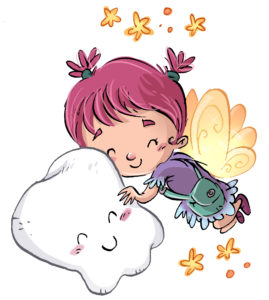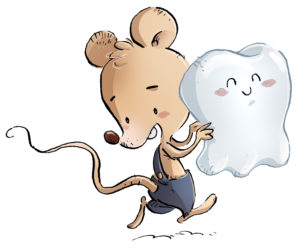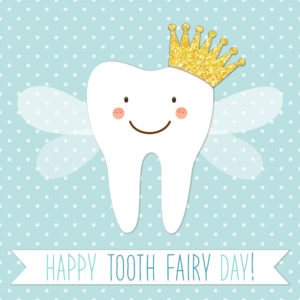National Tooth Fairy Day is usually celebrated on February 28th or August 22, but don’t forget False Teeth Day on the 9th of March too!
Losing baby teeth is an inevitability of growing up, and for children, it isn’t always the most pleasant of experiences. From pain to minor bleeding, the experience can be a bit traumatizing. As such, adults across many cultures and countries have developed unique customs and traditions to help children cope (and even look forward to) losing a tooth.
Although most of us are familiar with the traditional “tooth fairy”, the Tooth Mouse is an alternative that is much more familiar around the world.

The Tooth Mouse
Step aside fairy, a new (but old) character is here to take your place. The Tooth Mouse (and in some cases a ‘fairy mouse’) replaces the tooth fairy in many cultures.
Let’s take a look at a few…

Spain
In Spain, Raton de los Dientes (rat of teeth) is the tiny little keeper of children’s lost teeth.
Mexico
In Mexico children carefully place lost teeth under their pillows for “Raton Perez”, a rat who takes the teeth and leaves behind coins for the child.
France
The French version of the Tooth Mouse is known as La Petite Souris, which is translated to “little mouse” in English. In an interesting twist, this little guy leaves behind not money, but a little gift for the child.
Nigeria
In Nigeria, children toss their teeth in the attic of their home. Their hope is that a mouse will eat the tooth so that a new one will grow in.
India, Vietnam, and Korea
Here, children leave their lost upper teeth on the roof and their lost lower teeth under the floorboards. This tradition is to encourage teeth to grow continuously such as those of mice do.
Late Victorian Era Britain
During this time period, milk teeth were set out for a squirrel or mouse to take (later this was replaced with the tooth fairy).
The Dominican Republic, Ethiopia and Botswana
Forget the pillow. Kids here toss their teeth up onto the roof of their home in the hope that a mouse will take their teeth and by doing so return to them the gift of new teeth as strong as that of a rat or mouse.
The Origin of The Tooth Mouse
According to historians, it is generally believed that the origin of the tooth mouse was born several hundred years prior to the advent of the tooth fairy. The origin story is said to have been conceptualized in the 1600’s in a story titled “La Bonne Petite Souris”. In this tale, a mouse fights an evil king. The mouse stays hidden under the king’s pillow and when the king sleeps, the mouse crawls out and knocks out the king’s teeth.
What is Your Family’s Tradition?
The one commonality we see across cultures is the advent of something to take the child’s mind off of any anxiety or fear associated with losing a tooth. No matter what you come up with, have fun with it. There are no rules when it comes to magical creatures.













